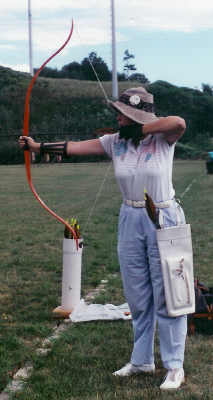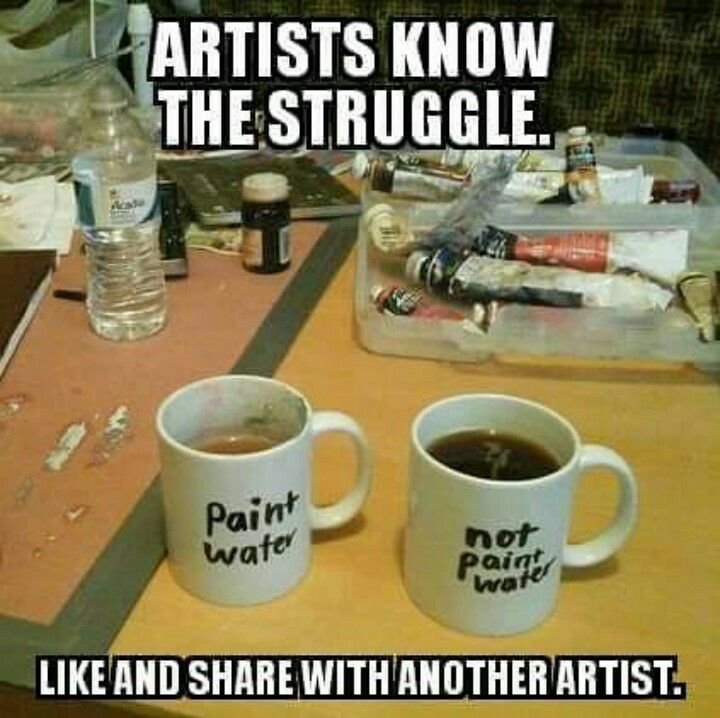
Sheilajeanne
Members-
Posts
2,718 -
Joined
-
Last visited
Content Type
Profiles
Forums
Events
Blogs
Gallery
Everything posted by Sheilajeanne
-
What do they want the harness for? There are different kinds for different purposes. And I'll warn them: walking a dog in a harness often encourages it to PULL, because that's what most harnesses are designed for! The special anti-pull harnesses restrict a dog's movement, and are much less humane than using a collar, and teaching your dog NOT to pull. But then, teaching a dog to walk on a loose leash seems to be a lost art. That's what I observed during my 6 years of running a boarding kennel...
- 13 replies
-
Coin Purse Designs
Sheilajeanne replied to Sheilajeanne's topic in Purses, Wallets, Belts and Miscellaneous Pocket Items
My S_I_L has confirmed that is indeed the style of purse she wants. So, as soon as she tells me the colour, I'm going to make one up for her! It's not a thickness of leather I generally have on hand, but I did find one piece that was the right size and weight. If I want to make more of these purses, I may have to ask Tandy if I can borrow their splitter for a few minutes... Given how much stuff I've bought from them, they'd probably say 'yes', as long as I don't make a habit of it! -
cjartist, that doesn't work if it's an INSIDE corner! Had a terrible time cutting a decent corner for the window on a cell phone case. That was when I found out about corner punches!
-
-
I just looked for Stohlman's book on Amazon.ca, and the only copy they have is a used one for $73.00!! The Tandy library has an e-edition available for $12.99, though. Or, with my elite membership, I can have my very own hard copy for $16.80! Choices, choices... :D Keith, this is the famous Al Stohlman round knife you're talking about, right? The one that won't hold an edge, because the steel is crap?
-
Coin Purse Designs
Sheilajeanne replied to Sheilajeanne's topic in Purses, Wallets, Belts and Miscellaneous Pocket Items
And I just made one out of paper, after printing up the template on my computer! Took me only about 15 minutes... had no idea it was so simple! -
Coin Purse Designs
Sheilajeanne replied to Sheilajeanne's topic in Purses, Wallets, Belts and Miscellaneous Pocket Items
Found it! It's called a pinwheel coin purse: http://leatherworker.net/forum/topic/68150-whell-coin-purse/ Looks like a fun design, and it doesn't use much leather, so if I foul up the first time around, it won't cost me much to try again! Thank you SO much! -
Coin Purse Designs
Sheilajeanne replied to Sheilajeanne's topic in Purses, Wallets, Belts and Miscellaneous Pocket Items
And now, the link doesn't work! Do you have a patterns for it? -
Coin Purse Designs
Sheilajeanne replied to Sheilajeanne's topic in Purses, Wallets, Belts and Miscellaneous Pocket Items
The squeeze frame was what I originally pictured, but from her description, I knew it must be something more like Halitech's second picture. Halitech, wow, that is something REALLY different! Going to check it out to see how hard it would be to make one! -
My sister-in-law needs a coin purse. She tried to describe to me what it was she wanted, but I just can't picture it. It sounded like the sort of spring closure that has 2 pieces of steel forming each side of the top, and you just press on either end to open it. But then she said the purse 'gets taller when you open it'. Now, I am REALLY scratching my head! Can anyone picture what she might be describing? Oh, and it's small. I made this purse for her for Christmas, and she says it's too big: https://www.tandyleather.com/en/product/3-pocket-coin-purse-kit She said it was like the orgami things we used to make as kids. There were 4 parts to them, and you fitted a finger in each part. The parts came together at the top in a cross shape, but you used your fingers to open them from underneath. When open, it kind of looked like 4 orange segments, joined at the bottom, only the segments were square in the inside surface, rather than wedge-shaped. (The idea was you could move the segments back and forth with your fingers, while you went eni-meni-mini-moe, then the other person would choose one of the inner segments, and you'd lift up a flap that had something silly written underneath it.) Wish I'd asked her to draw a picture for me. The impression I got from the above was the purse was sort of flat, until you pressed the edges of it, then it would get taller and open up. I am guessing the opening was circular and had 4 parts to it?? If this rings any bells with anyone, please let me know!
-
Why you don't buy the cheap stamping set on Amazon...
Sheilajeanne replied to jphillipw's topic in Stamping
All my stamps are Tandy, and i've never had one bow like that. I did have a beveler with a burr on the stamping face, and Tandy was happy to replace it for me. Take it back! -
New to leather craft - Glues, Colors and Finishers
Sheilajeanne replied to Columbiar's topic in How Do I Do That?
I save popsicle sticks to use as spreaders. You just throw them out if they get too messy! And Fiebing's Pro Oil Dye is LIGHT YEARS better than their regular dye! I found the regular stuff very very hard to apply evenly. It did help if the leather was slightly moist, though. Didn't have that problem with the oil dye. The regular dye also dried out the leather and made it curl. -
Biker, that bothered me, too! My husband was a HUGE fan of Ikea, and I still have a lot of the shelf units he bought there. Every time I move, a few more get left behind...but I still have lots! He was a bit OCD, and also a bit of a hoarder, so he was constantly buying more shelves to store his junk,...er, STUFF! They say 3 moves are as good as a fire for getting rid of stuff, and I've moved 5 times since he died. But still, lots of stuff...
-
Thought I'd post this for a chuckle... I've dipped my dye brush in my coffee at least once, and have had my rinse water half-way to my lips before realizing I had the wrong glass!
-
Amazing work! For those of you who haven't seen it, here's a link to Part 1! http://leatherworker.net/forum/topic/73988-odin/#comment-485613
-
Something I'd like to add, as someone who owned and ran a dog boarding kennel for many years is that probably about 80% of dog owners have their dog's collar fastened much too loose. I'd find this out the hard way when I tried to take the dog back to the kennel, and it doesn't want to go, and it slips its collar right over its head... Some breeds are worse for this than others (e.g. pugs) because the neck is large in relation to the body. There's a very good reason I never offered dog-walking services, and my preferred tool for moving dogs that don't want to follow me from Point A to Point B was a noose, not a leash!
-
He meant Eco-Flo Satin Sheen, not Stain Sheen. The guy who taught the leathercraft course I took has been doing this for over 30 years, and he says it's the best. Resolene can crack and peel.
-
Traditional Belt
Sheilajeanne replied to Youri's topic in Purses, Wallets, Belts and Miscellaneous Pocket Items
Very nice! Where did you get the hardware? I like the way the stamping sort of mimics the pattern on the buckle and end piece.- 5 replies
-
- belt.
- traditional
-
(and 2 more)
Tagged with:
-
Gorgeous as usual, Tim! Is that after antiquing, or did the oil just darken it so it looks like it's been antiqued?
-
English corrections, help wanted if you want ! :)
Sheilajeanne replied to a topic in Marketing and Advertising
Yeah, it's called 'paying it forward'! Someone does something for you, you return the favour by helping out someone else. My one complaint about the above is Eco-friendly should not be capitalized, because it's not a proper noun. You'd only capitalize it it if were a brand name (for example, Eco-flo dye). -
NEW Tandy Stitching Pony only $22.99 !! Amazon
Sheilajeanne replied to myjtp's topic in Leatherwork Conversation
Mattsbagger, if I put it under my legs, the article I was sewing was in shadow. If I rested it on top of my legs, and leaned forward into my work table to brace it, I got better light, but the height was less than ideal. Planning to shorten it still further, then use a C-clamp to clamp it to my work table. -
NEW Tandy Stitching Pony only $22.99 !! Amazon
Sheilajeanne replied to myjtp's topic in Leatherwork Conversation
BTW, the one in the link is their deluxe stitching pony. Even with that one, I shake my head when I see how much they want for it at the full price... Anyone here do their stitching this way, or do you have your pony attached to your work table? As I said above, my main issue is the lighting. Unless the article I'm stitching is on my work station, I don't have bright enough light. -
Damn, that is AWESOME! It almost looks like you used some sort of form in behind the leather to get the 3-D effect! How'd you achieve it?
-
NEW Tandy Stitching Pony only $22.99 !! Amazon
Sheilajeanne replied to myjtp's topic in Leatherwork Conversation
The cheaper of the two Tandy stitching ponies dropped to a ridiculously low price for one of their Christmas sales, so I bought one. I very quickly found I'd bought a white elephant. It was WAY too tall to use for stitching. The only way I could get a comfortable working height was to rest it on my lap, and lean into my work table to brace it. When I did that, my work still wasn't under the bright light I have over my work station. The other day, I took a saw and removed the top 4 inches, then glued a shim to the inside of each side of the top so I don't have to risk breaking the wood when I tighten the nut. I still need to take another 2" off the bottom to get it to the ideal height I want. There's enough extra wood there that I can do that and still re-attach the base. If you have any sort of carpentry skills, I'd recommend making your own. I'd often thought of doing that, but was too lazy. I think the reason they make them so tall is that the traditional way to use one of these was to hold it between you legs. A traditional stitching horse (the ones I've seen in pioneer villages and harness shops) was attached to the end of a saddle horse, which you'd actually sit on while stitching. Too bad no one's ever had the sense to realize, 'hey, most people don't DO it that way anymore!'



